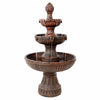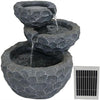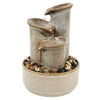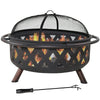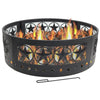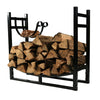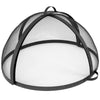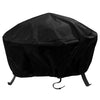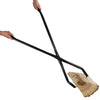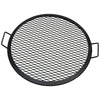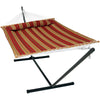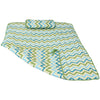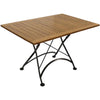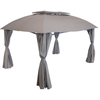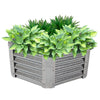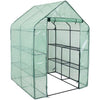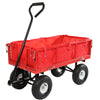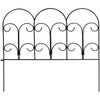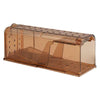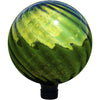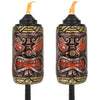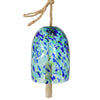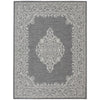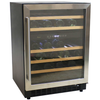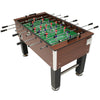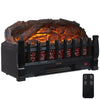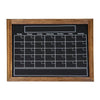With cast iron cookware, your culinary possibilities are virtually endless. These versatile kitchen staples are renowned for their ability to handle a wide range of cooking tasks. From sizzling up perfectly seared steaks and crispy fried chicken to baking mouthwatering cornbread and gooey skillet desserts, cast iron pans and skillets can do it all. They excel at heat retention and even distribution, making them ideal for slow-cooking stews, braising tender roasts, and simmering savory sauces. Whether you're whipping up breakfast, lunch, dinner, or dessert, cast iron cookware will quickly become your go-to choice, enhancing the flavor and texture of your dishes while providing exceptional heat control and durability. If you’re new to cast iron cooking, you may have some questions about how to use, care for, and store cast iron dishes. Find answers to some of the most commonly asked questions below.

What Can I Cook with Cast Iron Cookware?
Cast iron pans are versatile and can be used to make almost anything. Cook up your favorite vegetables, meat, eggs, pancakes, lasagna, pot pie, soup, cobbler, skillet cookies, and much more! There are even cast iron pizza pans to make delicious pizzas at home. However, there are a few things that should be cooked in enamel-lined pans or stainless steel cookware instead. Never use a cast iron dish to cook acidic foods because the acid breaks down the seasoning and leaches out metal from the pan, leaving a metallic taste in your food. The seasoned surface of cast iron takes time to build up and is the reason why it is nonstick.
Because the surface of cast iron cookware is seasoned and isn’t cleaned with soap, the pans retain flavors from the foods you cook. Be mindful about what you’re cooking in the pan and what you plan to make next. For example, if you cook meat in the pan one day and then use it to make a dessert the next day, your dessert will have a meaty taste from the imparted flavors on the pan’s surface.
Tip: Don’t use cast iron to cook sticky foods until the dish has been properly seasoned. This may take awhile, but using cast iron to make things like pancakes or rice before the surface is fully ready can result in the food sticking to the pan. Cook up fatty meats like steak or bacon to enhance the layers of fat on the pan to create a well-seasoned surface. Once cast iron is shiny and smooth, then you can cook eggs, pancakes, rice, and all kinds of stickier foods without worrying about not being able to get them out of the pan.
What are the Benefits of Cast Iron Cookware?
Using cast iron in your kitchen has many benefits. First is its unparalleled durability. When cared for properly, cast iron can last for generations, making it an eco-friendly choice that reduces the need for frequent replacements. Cast iron cookware features a nonstick surface that is created with natural oils. Harmful chemicals like PTFE (Teflon) or PFOAs (forever chemicals) are not used to create a nonstick surface like they are in other cookware. Another benefit of cast iron is its exceptional heat retention and even heating properties ensure food cooks evenly and stays warm, whether you’re searing a steak or simmering a soup. Cast iron also imparts a unique flavor to dishes over time, as it becomes seasoned with oils and fats used during cooking.

Cast iron is also incredibly versatile. You can use it on the stovetop or in the oven, making it perfect for dishes that require both searing and roasting. It’s an excellent choice for camping and outdoor cooking as well because it can be used over an open flame or hot coals. Additionally, cooking with cast iron can increase the iron content in your diet, making it a healthy option for those looking to boost their iron intake. Not to mention, the aesthetic appeal of cast iron cookware adds rustic charm to your kitchen, making it both functional and decorative.
How Do I Season Cast Iron Cookware?
The seasoning on cast iron is what allows it to be nonstick. Seasoning is an ongoing process where multiple layers of oil are baked onto the cookware, creating a rust-resistant, nonstick surface. The layers of oil eventually go through a process called polymerization where it molecularly bonds to the cast iron to prevent rust. Follow the steps below to season cast iron.

Step 1: Preheat the oven to 350 degrees F. Hand wash the cookware in warm or hot soapy water. (Cast iron won’t normally be washed with soap, only when seasoning is necessary.) Thoroughly rinse and dry the dish with a clean, dry cloth or paper towels.
Step 2: Pour a very small amount of oil onto the cookware. Too much oil will result in a sticky finish. Use a paper towel or clean cloth to spread a thin coat of oil around the entire top surface of the cookware. Flip the cookware over and apply a thin coat to the entire bottom surface of the cookware. The entire piece must be covered in oil, even the insides of the handles.
Step 3: Place the cookware upside down on the center rack of the oven. Place a sheet of aluminum foil on the bottom rack to catch any drips. Bake the dish for an hour. (When the oil is exposed to heat, it reacts with oxygen to go through polymerization.) Turn the oven off and allow the cookware to cool completely before removing it from the oven. Repeat steps 2 and 3 to build up many layers for seamless cooking.
What Oil Should I Use to Season my Cast Iron Cookware?
There are many kinds of oil that are used for cooking, so knowing which one works the best for your cast iron can be tricky. There are 3 things to consider when deciding what oil to use to season cast iron. The first thing is the smoke point. It’s best to choose an oil with a high smoke point to prevent the seasoning from breaking down in high heat. High smoke points ensure the oil completes polymerization to create a nonstick surface. The next thing to consider is the fatty acid composition of oils. Use polyunsaturated oils like flaxseed instead of saturated fats like coconut oil or even monounsaturated fats like olive oil. The final thing to consider is how well the oil dries. For example, flaxseed oil is a drying oil that hardens when exposed to air, while olive oil is a non-drying oil that doesn’t harden as well. Read the details of each oil below to know which is the best option for you.
Good Oil Options
- Flaxseed Oil: Considered to be the best for seasoning cast iron, although it can be expensive. Flaxseed oil is a food-grade oil that dries hard.
- Grapeseed Oil: Has a high smoke point, creates a good nonstick surface, more affordable than flaxseed oil.
- Canola and Vegetable Oil: Has a high smoke point, widely available, and is affordable.
- Bacon Grease: Has a high smoke point, may impart a subtle bacon taste onto meals cooked in the pan
Oils to Avoid
- Butter: Isn’t 100% fat and easily burns at high temperatures
- Olive Oil: Has a low smoke point, can create sticky residues on the pan
- Coconut Oil: Has a low smoke point
- Flavored Oils: Have added ingredients that may produce a sticky residue on the pan
How Do I Clean Cast Iron Cookware?
It’s important to clean all cast iron cookware before the first use. The first cleaning is slightly different from regular cleanings because it’s recommended to use warm water and a mild soap. This helps to clean any residue from the factory or packaging from the dish before cooking. Do not soak the dish in water or scrub it with abrasive materials. Be sure all soap has been rinsed off and dry the cookware with a clean towel or paper towel. Once the pan is clean, reseason the pan with oil. For more details on how to season, refer to the questions above.
After you’ve used cast iron cookware many times, the cleaning procedure changes slightly. Clean the cookware right after you’ve finished cooking, preferably while it is still warm. If it’s well-seasoned, the dish should only require a rinse with warm water. You can use a gentle brush or plastic pan scraper to remove any stuck-on food. For foods that are really stuck on, sprinkle salt and cooking oil and scrub using a paper towel. If excess scrubbing is required to remove stuck-on food, reseasoning the pan before using it again is recommended. Dry the cookware with a towel and hang or store it in a dry place.
Can I Use Cast Iron Cookware in the Dishwasher or Microwave?
No, cast iron should never be used in the microwave or washed in the dishwasher. Cast iron is not dishwasher safe, as the harsh detergents and high water temperatures can strip away the seasoning, which is the natural nonstick layer that develops on the surface over time. Clean cast iron cookware by hand with warm water and a brush between seasonings. Using cast iron in the microwave can potentially cause damage to the pan and prevent your food from heating evenly. Cast iron is designed for stovetop or oven use, where it excels in heat retention and even cooking.

Can I Use Cast Iron Cookware on an Electric Stove?
Yes! Cast iron cookware is compatible with all stovetops, including electric, gas, induction, and even glass-ceramic cooktops. Cast iron is well-suited for electric stovetops because it distributes heat evenly and retains it effectively, which helps in maintaining consistent cooking temperatures. Be sure to preheat the pan gradually to avoid thermal shock, especially if it’s cold or at room temperature, because rapid temperature changes can cause the dish to crack. Also ensure the size of the cookware matches the burner size for efficient heat transfer. When using cast iron on smooth surfaces like stovetops, always lift the dish completely when moving it to prevent scratches on the cooking surface.
Why is My Food Sticking to my Cast Iron Skillet?
If your food is sticking to your cast iron, it’s likely due to a few common reasons. It could be because the seasoning on your cast iron may not be well-established or adequately maintained. If it’s not well-seasoned or has worn off over time, food can stick to cast iron. To fix it, all you need to do is reseason the surface. Another reason for food sticking could be inadequate preheating. Cast iron takes some time to heat evenly, so it’s important to preheat the pan over medium-low to medium heat for a few minutes before adding your ingredients. And finally, you may not be using enough fat or oil when cooking with your cast iron pan. Even if the pan is well-seasoned, adding a little extra fat like butter, oil, or bacon grease can help ensure no food sticks while cooking.
What Should I Do if My Cast Iron Cookware Starts Rusting?
Over time, you may notice that your cast iron pans or Dutch oven begin to rust. There’s no need to toss the cookware aside or find a replacement because rust can be cleaned off your pan. When the cookware is exposed to too much moisture for long periods of time, rust develops on the surface. To rid your beloved pan of the rust, just follow the simple steps below to restore it.
Scour: Use a metal scouring pad or stiff brush along with warm, soapy water to scrub the pan, especially at the rusted spots. Rinse the cookware with water and thoroughly dry it with a towel.
Oil: Coat the pan with a thin layer of oil. Be careful not to use too much oil to avoid making the surface sticky. Cover all sides of the cookware.
Bake: Place the cookware upside down on the center rack of the oven. Place a sheet of aluminum foil on the bottom rack to catch any drips. Bake the dish for an hour at 450 degrees F. Turn the oven off and allow the cookware to cool completely before removing it from the oven. Repeat this process as needed to return the pan to its original state.
How Should I Store Cast Iron Cookware?
Properly storing your cast iron cookware is essential to maintain its seasoning and prevent rusting. Before putting your pan away, be sure it is completely dry and apply a thin layer of oil to maintain the seasoning. If you must stack the pans to store them, place a piece of paper towel between each one to prevent scratching or damaging the cooking surface. Store the cookware in a cool, dry place. Do not keep cast iron beneath the sink, in the basement, or anywhere that is damp or humid. Doing so can increase the chances of the pan rusting. To further protect cast iron, protective covers can be used to prevent dust buildup or scratches. Hanging cast iron pans from hooks or a pot rack is also a great way to ensure they are stored safely. They receive constant air circulation, which stops rust, and it gives you easy access to the cookware at all times. Heavy-duty pan organizers are also helpful for keeping your cast iron organized. Organizers can be placed on counter tops or in cabinets.
Cast iron is one of the most versatile and popular cookware options on the market. And it’s no wonder why it’s loved by many. Cast iron is incredibly versatile, durable, and can be used on any cooking surface. Try your hand at cooking with cast iron to spice up your cooking routines at home!
